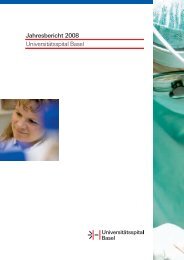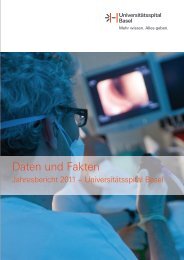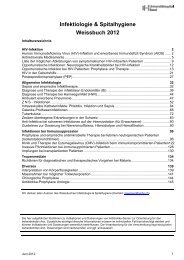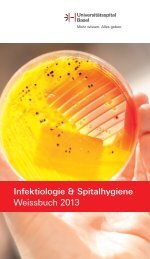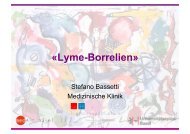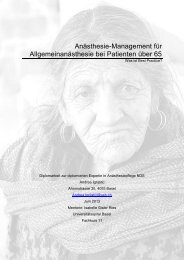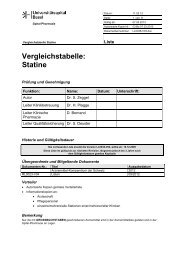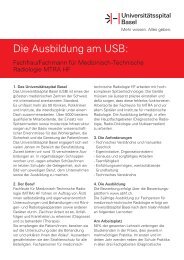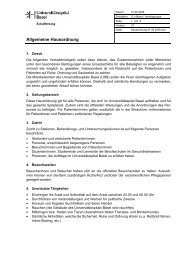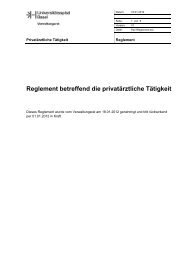Transmucosal Nasal Drug Delivery: Systemic Bioavailability of ...
Transmucosal Nasal Drug Delivery: Systemic Bioavailability of ...
Transmucosal Nasal Drug Delivery: Systemic Bioavailability of ...
You also want an ePaper? Increase the reach of your titles
YUMPU automatically turns print PDFs into web optimized ePapers that Google loves.
5. Project I: Development <strong>of</strong> preparations for transmucosal nasal midazolam delivery<br />
with 1.0 M sodium hydroxide), containing no solubilization enhancer, 10% RMβCD, 10% HPβCD,<br />
or 10% HPγCD. The suspensions were equilibrated at room temperature for 3 days. The<br />
suspensions were filtered (0.45 µm) and midazolam content assessed by HPLC. All samples were<br />
prepared in triplicates.<br />
5.2.4 <strong>Drug</strong> Release<br />
For drug release <strong>of</strong> midazolam from RMβCD-midazolam complexes aqueous solutions trough<br />
semi-permeable cellophane membranes, diffusion cells (see Figure 5-1) were used. A semipermeable<br />
cellophane membrane (Spectra/Por ® Dialysis Tubing, MWCO 2000 from regenerated<br />
cellulose) was inserted into diffusion cells with a surface area <strong>of</strong> 2.3 cm 2 .<br />
In a preliminary drug release study Dormicum ® 5 mg/ml, 10 mg/ml midazolam solubilized with<br />
20% RMβCD, and 10 mg/ml midazolam solubilized with equimolar amount <strong>of</strong> RMβCD (4%) were<br />
filled in donor compartments.<br />
For drug release 5 mg/ml midazolam in water; 5 mg/ml, 15 mg/ml, and 30 mg/ml midazolam solved<br />
with equimolar amount <strong>of</strong> RMβCD; and 5 mg/ml and 30 mg/ml midazolam with threefold molar<br />
amount <strong>of</strong> RMβCD were filled into donor compartment. Osmolality <strong>of</strong> all preparations for midazolam<br />
release studies was adjusted to 300mOsmol/kg with sodium chloride.<br />
The receiver compartment contained 0.9% sodium chloride in water. Both compartments contained<br />
8.0 ml and were stirred during the release experiments (see Figure 5-1 A and B). The diffusion<br />
cells were immersed in a water bath maintained at 37°C. Samples were withdrawn from the<br />
receptor compartment replaced with aliquots <strong>of</strong> 0.9% sodium chloride. Midazolam release per<br />
minute was assessed from the slope <strong>of</strong> the midazolam concentration time plot.<br />
A<br />
B<br />
Figure 5-1 A and B: Picture <strong>of</strong> a diffusion cell (A) and 2 diffusion cells mounted, ready for drug release<br />
experiment. The arrow indicates the position <strong>of</strong> the cellulose membrane.<br />
Katja Suter-Zimmermann Page 47 <strong>of</strong> 188 University <strong>of</strong> Basel, 2008




